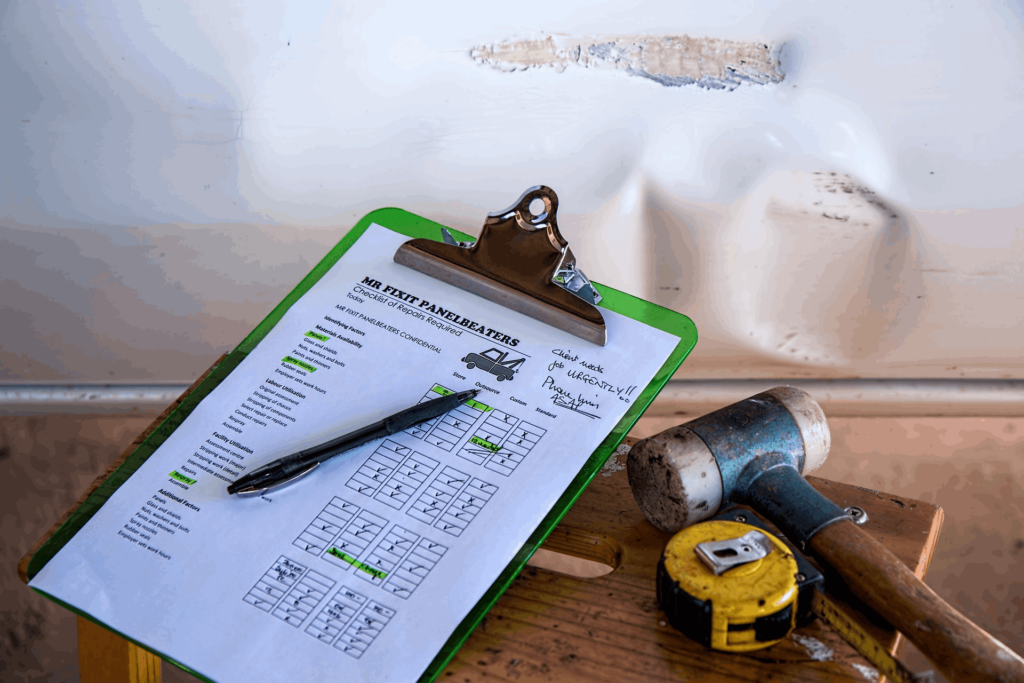Data from the NHTSA revealed approximately 3.6 million auto accidents resulted in property damage in 2020. It is significantly less than in 2019, which logged more than 4.8 million crashes that resulted in property damage. The steep decline in traffic accidents in the US perhaps traces back to the lockdowns associated with COVID-19.
Nevertheless, there was still a lot of property damage. Liability for the costs will depend on the
In no-fault states, the law removes this burden from liable motorists. The distinction is critical when determining who pays for car damage. That would seem to be the motorist’s
Consulting a personal injury lawyer can help you understand the concept of fault and no-fault in car accident claims. Law firms typically offer accident victims free consultations for a brief case review. Hiring a reliable car accident lawyer increases your chances of maximizing compensation and expediting your claims process.
Key Takeaways
|
The Basics of No-Fault Insurance
No-fault laws require motorists to file an
No-fault states typically require motorists to carry no-fault auto insurance or personal injury protection (PIP) to enforce this system. The policy compensates the insured motorists for any injuries they and their passengers sustain. However, the compensation may not exceed
According to Policygenius, there are currently 12 states which utilize no-fault auto insurance laws. It includes Florida, Kansas, Hawaii, Massachusetts, Kentucky, Minnesota, Michigan, New York, New Jersey, Pennsylvania, North Dakota, and Utah.
However, residents may opt between no-fault or liability
Meanwhile, 10 more states allow motorists to add no-fault coverage to their traditional auto
Damages covered by no-fault insurance
PIP coverage typically compensates the insured for lost income and medical expenses. It also covers significant costs incurred by policyholders, regardless of whether they are motorists or pedestrians hit by a car. In addition, it may also reimburse rehabilitation for severe injuries and funeral costs.
This
However, policyholders in choice no-fault states may choose tort insurance instead of PIP. In that case, they may file a lawsuit against another driver for medical costs and non-economic damages.
For example, in Kentucky, accident victims can sometimes sue the at-fault party. One is if the victim’s medical expenses exceed $1,000. Other scenarios that permit lawsuits against the motorist at fault include bodily injuries like broken bones, permanent disfigurement or injuries, and death.
Liability insurance vs. no-fault insurance
Another type of auto
Liability
Bodily injury liability would compensate for the other party’s physical injuries if you were at fault for an auto accident. It covers doctor’s visits, medication, rehabilitation, and other medical bills. Other damages under bodily injury liability include lost income and funeral costs.
This type of liability
On the other hand, property damage liability
Who pays for car damage in a no-fault state?
Contrary to what you might think,
Instead of paying for all damages, at-fault motorists will shoulder the outstanding balance from the other party’s PIP
State laws determine the distribution of fault or negligence. They use a legal principle called comparative negligence to allocate liability between involved parties in a negligence-based claim.
Comparative negligence has three types: pure comparative, modified comparative, and contributory negligence.
Under pure comparative negligence rules, an at-fault motorist’s percentage of fault dictates the value of damages they will shoulder. For example, suppose the
Meanwhile, states that use modified comparative rules cap the fault percentage a motorist can commit. An involved party must be less than 50 or 51 percent liable for the incident to be eligible for a payout.
On the other hand, contributory negligence implements the strictest conditions in negligence claims. Suppose the
Your comprehensive coverage and collision coverage
Suppose an accident damaged your vehicle in a no-fault state. The first option is to file a claim from your collision or comprehensive coverage. As the term suggests, collision
For instance, if your car strikes a guardrail, mailbox, or telephone pole, it will trigger your collision auto
Meanwhile, comprehensive auto
- Accidents involving an animal
- Natural disasters like floods, earthquakes, tornadoes, hurricanes, and volcanic eruptions
- Fire
- Vandalism and riot
- Theft
Insurance requirements vary per state, but collision and comprehensive
In addition, suppose the damaged vehicle is on loan or lease. Then the leasing company may require the motorist to have both
The at-fault driver’s car insurance policy
No-fault laws only prohibit personal injury claims from car accidents. This rule does not apply to property damage claims against the at-fault driver’s
Thus, accident victims may claim against the at-fault party in no-fault states to compensate for car repairs. However, claimants must prove that the other party was liable for the vehicle damage. The at-fault motorist’s
How To Start the Claims Process After an Auto Accident


Filing a claim with your
Claimants may utilize their no-fault car
- Review your
insurance policy: Look over yourinsurance policy to know what it covers, and if there are any deductibles you must pay. It is also essential to ensure that yourinsurance covers the accident. - Collect relevant information: Gather important information on the incident, such as the location, date, and time of the accident. In addition, document any injuries you may have sustained due to the auto accident. You must also collect personal details from the other party, like their contact and
insurance details. - Notify your
insurance company: You must inform yourinsurance provider of the accident. It is essential to do this step regardless of who was liable for the accident or if the damages seem minor. - Explain the incident to the
insurance adjuster: While speaking with theinsurance adjuster, go over what happened during the car accident. Be sure to provide as many relevant details as possible. You may also write down essential information immediately after the accident. - Submit documents to support an
insurance claim:Insurance companies usually require proof of ownership or loss before they process a claim. In addition, they might request a copy of the police report as added documentation. In case of injuries, you must provide medical records and hospital bills as proof of your injury.
When filing a no-fault
Dealing With Insurance Companies
When claiming compensation after an accident, hiring a personal injury attorney to help you with the process is advisable. They are skillful in negotiating with
Other tips that you must keep in mind include the following:
- Provide accurate information: Supply your
insurance company with precise details. It contains a complete account of what happened during the incident and any physical injuries you sustained. - Track official documentation: Gather all relevant documentation concerning the accident, such as medical expenses and lost wages. In addition, hold on to copies of any medical records and other official reports related to the incident.
- Follow up: Keep communications open with your
insurance provider and consistently request updates on the status of your case.
Legal Options for Resolving Disputes
There are various legal options if you need to restore or replace your car due to an auto accident. You may settle your claim with the at-fault motorist’s
The liable party’s liability
You may mediate your case with a neutral third party to settle. This process can be court-ordered or voluntary and is usually less expensive than court proceedings.
Another option is to submit the dispute to a third-party arbitrator. The arbitration can result in a binding or non-binding resolution. It dictates whether the parties must legally abide by the arbitrator’s decision.
Lastly, the most formal and expensive option is to take the dispute to the state court system. However, filing a lawsuit does not automatically bring your accident to trial. But it may be necessary if the parties cannot resolve the issue using other options.


Pro Tip
You can still file a car accident lawsuit against a negligent driver in no-fault states when your injuries meet the threshold in your state. Likewise, accidents resulting in fatalities can be a basis for a wrongful death lawsuit.
Connect With a Credible Car Accident Attorney
If you were in a single-vehicle crash in a no-fault state, your comprehensive or collision coverage would pay for vehicle repair or replacement. Suppose another driver’s negligence caused the motor vehicle accident. In that case, their liability
No matter what approach you choose after an accident, seeking legal representation from a car accident lawyer is advisable.
The Personal Injury Center has a network of competent lawyers specializing in car accident claims. We can help connect you with a credible car accident lawyer. They have the knowledge and resources to help accident victims recover maximum compensation.
Suppose you wish to learn more about your case. In that case, you can browse our collection of legal articles. In either case, we can help. Visit The Personal Injury Center today.
Let a personal injury lawyer help with your car insurance claim. Contact The Personal Injury Center for a free case evaluation.
FAQs on Who Pays for Car Damage in a No-Fault State
What happens if the at-fault motorist in a no-fault accident is uninsured?
As a safety precaution, you may avail of uninsured motorist coverage on top of your PIP insurance. This policy financially protects you if you get into an accident with an uninsured motorist.
If your injuries exceed the threshold in a no-fault state, you may also file against the uninsured driver. However, you must prove that they are directly responsible for your losses.
Will my insurance premium increase after a car accident?
Generally, if you are not liable for a car accident, your car insurance rates will not increase. Even if you need to file a claim from your insurance, some companies won’t charge you more for future coverage.
However, your car insurance rates may increase if your negligence or recklessness caused an accident.
How soon should I file a personal injury claim in a no-fault state?
Usually, the time limit to file personal injury cases can range from one to six years, depending on the state. You may need to consult with your car accident lawyer to be sure which timeframe applies to your area.



